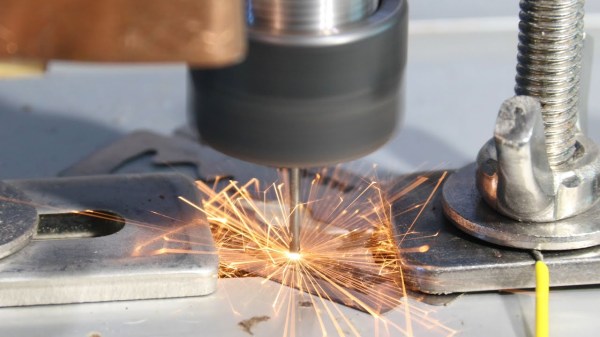Bears! Are they scared of massive arcs that rip through the air, making a lot of noise in the process? [Jay] from the Plasma Channel sure hopes so, because that’s how his bear deterrent works!
[Jay] calls it the Bear Blaster 5000. Right from the drop, this thing looks like some crazy weapon out of Halo. That’s because it throws huge arcs at 280,000 volts. The basic concept behind it is simple enough—a battery drives a circuit which generates (kinda) low voltage AC. This is fed to the two voltage multipliers which are set up with opposite polarity to create the greatest possible potential difference between the two electrodes they feed. The meaty combination is able to arc across electrodes spaced over four inches apart. It’s all wrapped up in a super-cool 3D printed housing that really shows off the voltage multiplier banks.
Continue reading “Keep Bears At Bay With The Crackle Of 280,000 Volts”


















